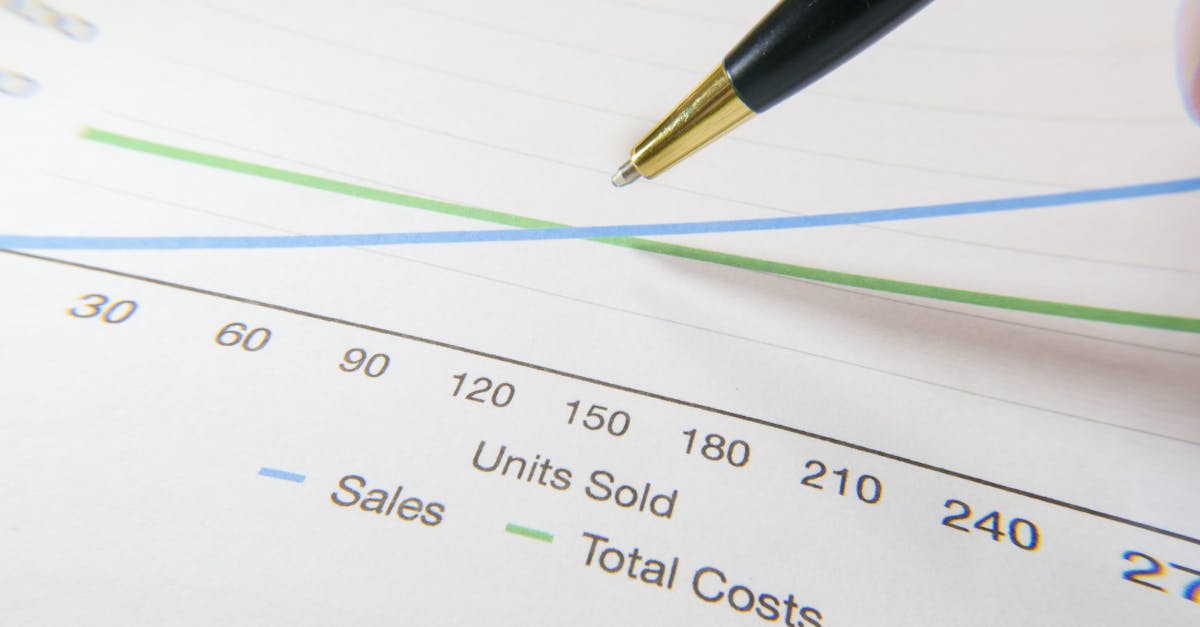Key Takeaways
- BPA enables scalable personalization: Business Process Automation (BPA) helps businesses deliver tailored marketing messages efficiently by automating repetitive tasks like data collection, segmentation, and campaign management.
- Real-time insights for better engagement: BPA leverages real-time data analysis to adjust campaigns dynamically, ensuring personalized content resonates with individual preferences across multiple channels.
- Enhanced customer experience and loyalty: Personalized messaging through BPA fosters stronger connections with customers, improving satisfaction and loyalty by addressing their unique needs and interests.
- Increased efficiency and resource optimization: Automating workflows saves time, reduces errors, and allows teams to focus on creative strategies rather than manual processes.
- Improved conversion rates: By delivering hyper-relevant offers and recommendations using BPA tools, businesses can drive higher engagement and boost sales effectively.
- Balancing automation with human touch is key: While BPA streamlines processes, maintaining a balance between automated tasks and human interaction ensures authenticity in customer relationships.
In today’s fast-paced digital world, personalization isn’t just a luxury—it’s an expectation. Studies show that 80% of consumers are more likely to make a purchase when brands offer personalized experiences. But how can businesses scale this level of customization without overwhelming their resources? That’s where Business Process Automation (BPA) steps in.
By leveraging BPA, we can streamline data collection, analyze customer behavior, and deliver tailored marketing messages with precision. It allows us to move beyond generic campaigns and create experiences that truly resonate with individual preferences. The result? Higher engagement rates, stronger customer loyalty, and ultimately, increased revenue.
Let’s explore how BPA transforms the way we connect with our audience by making personalization smarter and more efficient than ever before.
Understanding BPA in Marketing
Business Process Automation (BPA) transforms how brands interact with their audiences. It simplifies complex workflows, enabling marketers to craft personalized experiences efficiently.
What Is BPA?
BPA automates repetitive tasks and processes using technology, increasing efficiency and accuracy. In marketing, it streamlines activities like data collection, audience segmentation, content scheduling, and campaign analysis. For example, instead of manually sorting customer emails for a newsletter campaign, BPA tools can categorize them based on demographics or behavior patterns.
Unlike manual methods that risk human error or delays, automated systems operate consistently without interruptions. This enables businesses to focus on strategic activities while ensuring routine tasks are handled seamlessly. Tools like CRM software often incorporate BPA features to enhance customer interactions through automation.
Importance of BPA in Modern Marketing
BPA plays a central role in delivering hyper-personalized marketing messages at scale by leveraging real-time data analysis and automation capabilities. With consumer expectations for tailored experiences rising steadily, manual approaches no longer suffice for maintaining competitiveness.
For instance, consider email campaigns: automation platforms allow dynamic content insertion based on individual user preferences or actions—like sending product recommendations after browsing specific items online. Similarly, social media ads can adapt messaging depending on user engagement levels tracked via integrated analytics.
This level of personalization fosters stronger customer connections while optimizing resource allocation across teams. By automating mundane workflows such as lead scoring or triggered responses (e.g., abandoned cart follow-ups), marketers free up valuable time to innovate and refine strategies further.
The Role of BPA in Personalization
Business Process Automation (BPA) helps businesses deliver personalized marketing messages efficiently. By automating processes, BPA transforms customer data into actionable insights.
Automating Customer Segmentation
BPA simplifies customer segmentation by analyzing large datasets quickly. These tools group customers based on factors such as age, location, purchase history, or product preferences. For example, a business might identify frequent buyers of eco-friendly products and create campaigns specifically for them.
Automation eliminates manual sorting errors and saves time. Businesses can use this segmentation to direct resources where they’ll have the most impact, like offering discounts to high-value customers or promoting new services to less engaged groups. Tracking performance at the segment level also becomes easier with automated systems.
Real-Time Data Analysis for Personalized Campaigns
BPA collects and evaluates customer data instantly. This allows marketers to adjust campaigns based on real-time feedback. For instance, if an email campaign featuring a limited-time offer performs well within one demographic but poorly in another, adjustments can be made immediately.
These tools also help customize messages across multiple channels like social media ads and push notifications. A user browsing outdoor gear might see targeted offers for hiking equipment soon after leaving a website without purchasing anything.
Using BPA enables faster decision-making and greater accuracy in delivering relevant content while optimizing engagement strategies dynamically during ongoing campaigns.
Benefits of Using BPA for Personalized Marketing Messages
Business Process Automation (BPA) revolutionizes how we create and deliver personalized marketing messages. It automates repetitive tasks, streamlines processes, and enhances the ability to provide customers with relevant and engaging experiences.
Enhanced Customer Experience
BPA tools analyze customer data like purchase history, website activity, and email engagement. This analysis helps us craft marketing messages that resonate with individual preferences. For instance, a shopper who frequently buys fitness gear might receive promotions on new workout equipment or apparel. Automating these insights reduces manual errors and improves relevance.
By delivering offers that align with customer interests, we build stronger connections. BPA also personalizes loyalty programs by tailoring rewards based on spending habits or product preferences. When customers feel valued through meaningful interactions, satisfaction levels rise.
Increased Marketing Efficiency
Automating marketing workflows saves time and effort in campaign management. Tasks like audience segmentation, email scheduling, and reporting become seamless with BPA systems. For example, segmenting users by demographics or behavior used to take hours but now happens instantly with automation software.
This efficiency allows us to focus resources on creative strategies rather than mundane processes. Real-time updates enhance decision-making during campaigns—adjusting an ad's content mid-run based on performance data maximizes engagement without delays.
Improved Conversion Rates
Personalized messaging increases the likelihood of driving conversions. Customers are more likely to act when offers match their needs or desires precisely. Email campaigns using dynamic content can display product recommendations unique to each recipient's browsing history.
A/B testing becomes easier as automated systems quickly identify top-performing variations of ads or emails. By refining these elements automatically over time, conversion rates continually improve across channels like social media ads or e-commerce platforms.
Examples of BPA in Personalized Marketing
Behavioral Personalization Analytics (BPA) transforms how businesses connect with audiences. By analyzing customer behavior, we can deliver messages that resonate on a deeper level.
Chatbots for Tailored Customer Interactions
Chatbots powered by BPA create meaningful and efficient customer interactions. They analyze previous conversations, purchasing patterns, and browsing history to provide instant responses that feel relevant and personal. For instance, if a user frequently searches for eco-friendly products on an e-commerce site, the chatbot might suggest new arrivals or promotions aligned with their preferences.
These automated tools also handle FAQs while identifying opportunities to upsell or cross-sell based on real-time data. A chatbot assisting with clothing purchases could recommend accessories matching the selected outfit style or color palette. By automating such tasks, brands save time while improving customer engagement quality.
Furthermore, integrating chatbots into platforms like service business portals can enhance assistance efficiency for service companies managing customer inquiries. This approach reduces response times and increases satisfaction without requiring manual intervention from support teams.
Dynamic Email Campaigns Using BPA
Email campaigns become more impactful when enriched with behavioral insights from BPA. By analyzing data points like purchase frequency or abandoned carts, we can craft emails that speak directly to individual interests. Consider a scenario where a user browses winter jackets but leaves without making a purchase; an automated email featuring discounts on those products could encourage them to return.
Beyond product recommendations, dynamic content insertion enables personalized messaging at scale. Incorporating names or referencing past interactions makes emails feel less generic—recipients are more likely to engage as they perceive genuine value in the communication.
For example, during Marie Curie's Great Daffodil Appeal campaign mentioned earlier, geolocation data was used creatively within email campaigns to guide supporters toward nearby collection sites based on their prior participation history. Such innovations showcase how BPA drives connection and action simultaneously through targeted approaches tailored specifically for each audience segment.
Challenges and Considerations
Adopting BPA for personalized marketing is transformative but comes with its challenges. Addressing these effectively can help businesses fully leverage automation’s potential.
Data Privacy Concerns
Automating customer data collection raises privacy issues. With increasing regulations like GDPR and CCPA, companies must prioritize compliance to avoid legal risks. BPA tools often handle sensitive information such as purchase histories and browsing behaviors, making secure storage and data encryption critical.
Transparency builds trust. Consumers want to know how their data is used, so clear privacy policies are essential. For instance, explaining that collected data improves user experience reassures customers while maintaining compliance.
Regular audits validate security measures. Automated systems should undergo periodic checks to prevent breaches or misuse of personal information. Partnering with reputable providers ensures adherence to industry standards for safeguarding customer details.
Balancing Automation and Human Touch
While automation enhances efficiency, over-reliance risks alienating customers who value human interaction in brand communication. Striking a balance between automated processes and personalized service fosters genuine connections.
For example, chatbots efficiently address FAQs but may frustrate users seeking complex issue resolutions. Integrating options for live support alongside automated responses caters to diverse preferences without compromising engagement quality.
Customizing content thoughtfully avoids generic messaging pitfalls often associated with automation. Instead of relying solely on algorithms, marketers might review campaign strategies periodically to refine tone and relevance based on feedback.
Automation complements creativity rather than replacing it entirely. By freeing up time from repetitive tasks, teams can focus more on crafting impactful narratives that resonate emotionally with audiences while preserving authenticity in interactions.
Best Practices for Implementing BPA in Personalized Marketing
Streamlining personalized marketing with Business Process Automation (BPA) requires strategic planning and ongoing refinement. By focusing on specific practices, we can effectively maximize its potential to enhance customer experiences and improve marketing outcomes.
Start with Clear Goals
Establishing well-defined objectives is critical before introducing BPA into your marketing processes. This step aligns automation efforts with business priorities and lays the foundation for measurable success.
- Define Processes for Automation: Identify repetitive tasks like email segmentation, data entry, or campaign scheduling that BPA can simplify. Tools tailored for these activities save time and reduce errors.
- Set Achievable Objectives: For instance, aim to increase click-through rates by 15% within six months using dynamic email campaigns powered by automated insights from real-time data.
- Focus on Value Exchange: Customers provide first-party data through interactions. Use this information responsibly to deliver accurate recommendations while fostering trust. For example, analyzing purchase behavior might reveal trends that guide special offers or discounts.
Clear goals not only streamline implementation but also create benchmarks to evaluate progress over time.
Continuously Monitor and Optimize
Automation isn’t a one-and-done solution; ongoing monitoring ensures it remains effective while adapting to changing needs or market conditions.
- Track Performance Metrics: Evaluate metrics such as open rates or conversion percentages regularly. If an A/B testing campaign shows one version underperforming, adjust content immediately rather than waiting until the next cycle.
- Leverage Feedback Loops: Real-time feedback enables quick adjustments during campaigns. For instance, if customers engage more with SMS reminders than emails about abandoned carts, shift focus accordingly for better results.
- Test New Features Periodically: Update workflows when innovative tools emerge that boost efficiency further—like integrating AI-driven chatbots capable of providing hyper-relevant responses based on user queries without human intervention.
By keeping systems flexible yet efficient through continuous checks and updates, we maintain a competitive edge in delivering impactful personalized marketing experiences.
Conclusion
BPA has revolutionized how we approach personalized marketing, offering the tools to meet rising consumer expectations while maintaining efficiency. By leveraging automation, we can create meaningful connections with our audiences, deliver tailored experiences at scale, and optimize resources for greater impact.
As businesses navigate an increasingly competitive landscape, BPA empowers us to stay agile, innovative, and customer-focused. Balancing automation with a human touch ensures that our strategies remain both efficient and authentic. With careful implementation and continuous refinement, BPA unlocks endless possibilities for personalization-driven success.
Frequently Asked Questions
What is Business Process Automation (BPA) in marketing?
Business Process Automation (BPA) in marketing refers to the use of technology to automate repetitive tasks such as data collection, audience segmentation, email scheduling, and campaign analysis. By streamlining these processes, BPA helps businesses deliver personalized experiences more efficiently while saving time and reducing human error.
How does BPA help with personalization?
BPA simplifies customer segmentation and real-time data analysis, allowing businesses to tailor marketing messages based on customer behavior, preferences, and demographics. For example, it can dynamically adjust email content or social media ads to match individual user interests for a more personalized experience.
Why is personalization important in digital marketing?
Personalization enhances customer engagement by delivering tailored experiences that resonate with individual needs. Studies show 80% of consumers are more likely to buy from brands offering personalized interactions. It builds loyalty, improves conversion rates, and fosters stronger connections between brands and customers.
What are the benefits of using BPA for personalized marketing?
BPA improves efficiency by automating routine tasks like audience targeting and campaign management. It also enhances accuracy in analyzing customer data to create relevant messaging. Benefits include increased engagement, higher conversion rates, optimized resource allocation, improved decision-making during campaigns, and stronger customer relationships.
Can BPA handle real-time data for better results?
Yes! BPA utilizes real-time data analysis to adapt campaigns instantly based on user behavior or feedback. This ensures timely adjustments that maximize engagement without delays—for instance, updating promotions or retargeting ads based on immediate consumer actions.
How does automation improve conversion rates?
Automation enables consistent A/B testing across channels like email or social media ads. By refining messaging over time using insights from automated systems, marketers can optimize offers that align with customers’ needs—leading to higher click-through rates and conversions.
Are there challenges when adopting BPA for marketing?
Challenges include ensuring data privacy compliance with regulations like GDPR or CCPA while securely handling sensitive information. Companies must also balance automation with a human touch in communication to avoid alienating customers seeking personal interaction.
How do chatbots enhance personalization through automation?
Chatbots powered by BPA analyze past conversations and purchasing patterns for context-based interactions. They provide tailored product suggestions or answers specific to customers' queries—enhancing engagement quality while saving time for both businesses and users.
Does automation eliminate creativity in marketing strategies?
No! Automating repetitive tasks frees up resources so marketers can focus on creative strategy development instead of manual workflows. This allows teams to innovate their approach while maintaining efficient operations through automation tools.
What are best practices for implementing BPA in personalized marketing?
Start by defining clear goals and identifying processes suited for automation. Continuously monitor performance metrics using feedback loops to optimize outputs over time. Ensure compliance with privacy laws while balancing automated workflows with live support options where necessary for a personal touch.






